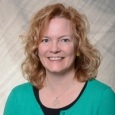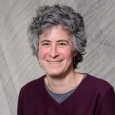Building Interdisciplinary Networks: Team Teaching Benefits for Religious Studies Professors
Interdisciplinary Team Teaching
In times of budget cuts and the shrinking of the humanities, women’s studies courses offer religion professors an opportunity to build interdisciplinary networks across campus. Women’s studies in particular relies on multiple disciplines as well as personal experience to construct knowledge; it requires students to synthesize diverse types of information and insights. This makes it both inspiring to students and challenging to teach. We suggest that a transparent model of team teaching is a pedagogical strategy that can meet this challenge by modeling how to integrate various disciplinary insights and personal experience into true interdisciplinary knowledge production. By transparent team teaching, we do not mean splitting lectures in half; rather we refer to a process of open-ended, open-minded intellectual interaction that we will describe below.
In relation to the course we team taught, "Introduction to Women’s Studies," this strategy had several practical payoffs. As professors of history and religious studies, we were able to point out to students how both historical and religious questions and concerns permeated every topic from sexuality to gender roles. For example, we explained how Christian notions of purity and virginity as well as the history of slavery and colonialism lead to differing stereotypes about the sexuality of white women and women of color. These constant reminders of multiple perspectives informed by our disciplinary training highlighted the interdisciplinary nature of women’s studies and all knowledge production, and inconspicuously highlighted the limitations of any one discipline’s perspective. Because our method of team teaching is less authoritarian, it allowed us to be more transparent regarding the many conscious—yet hidden—decisions a professor makes when leading a class. Finally, since the class was largely discussion based, team teaching helped us to demonstrate for students how to use one’s personal experiences and anecdotes as a means to explain theoretical concepts such as intersectionality or feminist theology.
Team Teaching Women’s Studies through Religion and History
The discipline of women’s studies evolved out of the feminist movement of the 1960s and '70s with its emphasis on consciousness-raising and its concomitant assertion of personal experience as a valid form of evidence. Taking these values seriously required us to commit to a more transparent approach to both teaching and knowledge production.
Facebook Essay Assignment
3-5 pages typed, double-spaced.
Using the women’s studies terms we have covered, analyze the Facebook pages of five people who do not attend Adrian College, using only initials to refer to them. In what ways do these individuals present their gender? What role does masculinity or femininity play in their self-presentation? What role does sexuality play in their self-presentation?
Team teaching made our pedagogy both more open and less authoritative because we verbalized the kind of questions and comments that professors usually confine to the privacy of their own minds. We would interrupt each other (gently) if we were going too far off on tangents, ask each other for clarification, and question aloud whether we had devoted sufficient time and attention to a topic. We worried that we would appear unprepared or disorganized to the students, but we also appreciated that this process presented them with a more honest impression of the ways in which human knowledge must be actively constructed, rather than simply received. Furthermore, our willingness to learn from one another displayed the limitations of our own expertise and traditional disciplinary boundaries. As professors, we found admitting ignorance to be uncomfortable, but it sometimes led to effective lessons. For example, one day during a discussion of sexuality, Melissa, who was raised in a traditional Baptist family and is a scholar of religion, was connecting social norms with the doctrine of Original Sin. Deborah, who is a historian and was raised in an unorthodox Jewish family, expressed her long-standing confusion about the concept. The resulting colloquy illustrated the contrast between insider and outsider perspectives on our society’s majority religion, enabling students to see how what is familiar for the majority could in fact be strange for the minority.
In addition to the risks to our own authority posed by interdisciplinary team-teaching, another hazard we faced was that the class would devolve into personal sharing without academic content. In many ways, this was the easiest challenge to overcome because the solution lay in what we already knew how to do: apply rigorous standards to student work and design substantive assignments. All of the assignments in the course emphasized mastering and applying women’s studies terms, such as gender, intersectionality, objectification, and privilege. We strongly encouraged students to use these concepts throughout class discussions, and they produced presentations and papers analyzing media clips and their friends’ Facebook pages by applying these concepts. The final for the class consisted of a take-home “dictionary” in which students defined twenty key terms and applied critical thinking to them by questioning terminology or by describing different ways of conceptualizing the term.
In allowing students’ and our experiences to be a valued, although not sufficient, subject for discussion, the class provided many real and meaningful examples of the feminist conception of intersectionality. Intersectionality rests on the assumption that social categories are mutually constitutive, so that multiple factors such as gender, race, class, and age merge together to form individual identities. As they talked and listened to one another, it became clear that the students’ racial and class backgrounds, sexual orientations, and religious identities all led to very different experiences of gender. Our own participation highlighted generational change, which was especially clear in our discussion of abortion. Many of the students asserted that although they themselves would never have an abortion, they did not want to interfere with other people’s decision to do so. Yet they rejected the “pro-choice” moniker because to them it implied advocacy for abortion. Their tolerance for choice, yet rejection of the pro-choice label, completely perplexed their forty-something professors, a generation gap that reflects a wider national debate among feminists.
Building Interdisciplinary Networks
We teach at Adrian College in Adrian, Michigan. It is a small, private college of liberal arts and sciences related to the United Methodist Church with an enrollment of 1650 students. Women’s studies is an interdisciplinary program that only offers a minor.
The course "Introduction to Women’s Studies" is the required 100-level gateway class to the minor. It rotates among interested faculty from various departments across the campus. There is no common syllabus, so professors naturally tend to privilege their own disciplines. One reason we decided to team teach the course was in order to develop a common syllabus or at least a common vocabulary that could possibly better prepare students for the multidisciplinary courses that follow in the minor. Student feedback and the results of the final indicated we met these goals and that students gained interdisciplinary knowledge and higher order critical thinking skills. For the most part, they took the final project seriously, and they produced a “dictionary” of terms that they can use as a reference tool for future course work in women’s studies.
Our experience suggests the power of a religious studies perspective; for example, our discussions of sexuality demonstrate the need to reflect on the role that religion plays in our cultural assumptions, ethical categories, and historical development. It is easy to imagine, therefore, how insights from religious studies would lead to deeper discussions in a wide variety of classes, from environmental studies to film studies. Team teaching is one of the best ways to accomplish this goal.
Good team teaching requires transparency of process, which resulted in some discomfort for us and for some the students. One student’s written course evaluation criticized the ways in which we “seemed to figure things out in front of the class.” This unease belies the success of our approach. Instead of receiving pat answers from authorities, students witnessed and participated in the uncertain, ambiguous, and strenuous process of revisioning knowledge production. In a global age when knowledge is changing quickly, and the nature and future of humanities is in question, this ability to integrate disparate information is an invaluable skill for both students and professors.
 Melissa Stewart holds a PhD from Vanderbilt University and is a professor of religion at Adrian College, where she teaches courses in Judaism, Christianity, Islam, ethics and women’s studies. She is the director of Adrian College’s Center for Effective Teaching, and she most recently published “Mary, the Mother of God: Ecumenical Bridge or Barrier?” in Theology Today, (January 2011).
Melissa Stewart holds a PhD from Vanderbilt University and is a professor of religion at Adrian College, where she teaches courses in Judaism, Christianity, Islam, ethics and women’s studies. She is the director of Adrian College’s Center for Effective Teaching, and she most recently published “Mary, the Mother of God: Ecumenical Bridge or Barrier?” in Theology Today, (January 2011).
 Deborah Field holds a PhD from the University of Michigan and is a professor of history at Adrian College, where she teaches a wide range of courses in history, women’s studies, and the honors program. She is the author of several articles and a monograph, Private Life and Communist Morality in Khrushchev’s Russia (Peter Lang, 2007).
Deborah Field holds a PhD from the University of Michigan and is a professor of history at Adrian College, where she teaches a wide range of courses in history, women’s studies, and the honors program. She is the author of several articles and a monograph, Private Life and Communist Morality in Khrushchev’s Russia (Peter Lang, 2007).
